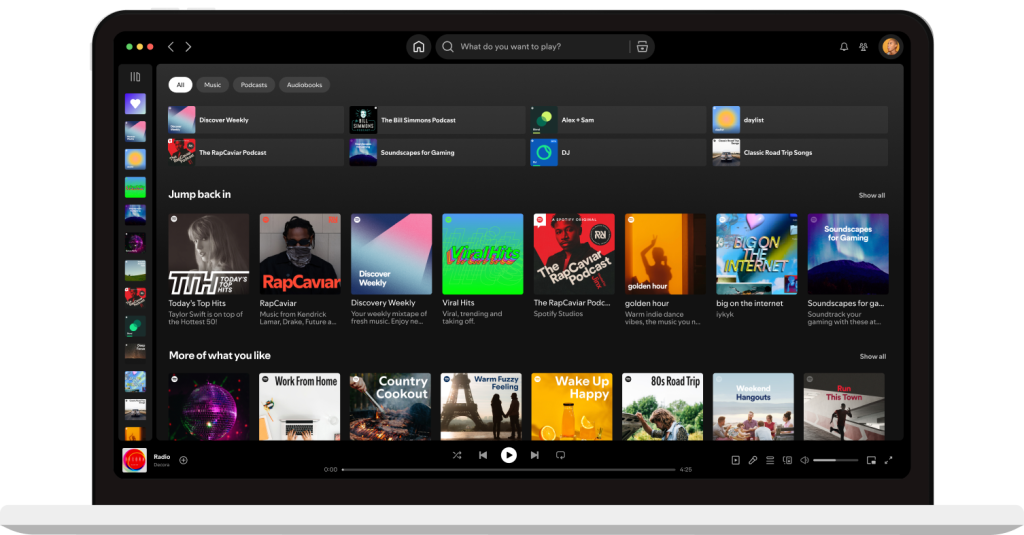
Let’s be honest. Spotify isn’t just a music app — it’s the friend who knows your taste better than you do. Let’s face it. Spotify isn’t just a music streaming service. It’s your personal DJ, life coach, therapist, and occasional musical shoulder to cry on. We’ve all had that moment: you’re scrolling through your Discover Weekly, and suddenly, Spotify knows you better than you know yourself. How does it do that? Is it secretly reading our minds? Has it developed the uncanny ability to predict our every mood? Or is it something a little more… technological?
In reality, the magic behind Spotify isn’t magic at all. It’s all tech. And it’s beautiful, slightly terrifying, and endlessly fascinating.
Spotify has mastered the art of using technology to create the most personalized listening experience on the planet. It’s not just an app that plays songs; it’s a powerful ecosystem that thrives on data, AI, and machine learning. It gets us. But more importantly, it uses some seriously impressive technology to do so.
📊 1. The Power of Data: From Playlists to Personalization
You might think Spotify’s genius comes from its massive music library (and yes, that’s part of it), but the real secret sauce lies in how it uses data. Every play, every skip, every repeat, every “I’ll listen to this for the third time in a row” moment contributes to the vast ocean of information that Spotify collects.
Here’s the deal: Every time you make a choice — be it selecting a playlist or skipping a song — Spotify takes note. But it doesn’t just track what you listen to; it tracks how you listen to it. It’s the difference between “I like this song” and “I’m about to play it again… and again.”
Spotify combines user behavior, listening patterns, and preferences to build a precise profile of your musical taste. This data then feeds into their algorithm to create an experience that feels almost… psychic.
So, when you open Spotify and poof, your Discover Weekly or Release Radar feels like a curated collection of exactly what you needed, that’s not a fluke. It’s a result of data analysis that’s gone through a whole lot of complex machine learning models and, more impressively, your listening habits.
🤖 2. Machine Learning and AI: The Brain Behind the Beats
Okay, now we’re getting into the cool stuff. Spotify’s engine is built on a collection of machine learning models, AI systems, and natural language processing techniques. But what does all of that actually mean?
Let’s start with collaborative filtering. This is the fancy term for the method that powers Spotify’s recommendations. In simpler terms: it compares what you listen to with what others who listen to similar music also enjoy. If your playlist is heavy on alternative indie rock, it’s likely that the algorithm will suggest more of that genre based on patterns it detects from other users.
But it doesn’t stop there. Spotify also uses content-based filtering, which dives deeper into the songs themselves. What does the song sound like? What are its rhythms, tempos, and features? Spotify can tell you that a song similar to your favorite track has the same vibe, even if it’s from an entirely different genre.
And don’t forget about deep learning. This is the tech equivalent of a rockstar scientist who listens to all the data, learns from it, and then becomes smarter each time. Deep learning helps Spotify understand more complex patterns in your musical taste, such as identifying when you want a chill vibe versus when you’re in the mood for something more upbeat. It’s like having a DJ who’s not only intuitive but also really, really good at reading the room.
🎛️ 3. The Tech Stack: The Magic Behind the Curtain
Behind the scenes, Spotify is a technological powerhouse. The tech stack is like the unsung hero in this whole equation. Without it, all the algorithms, data processing, and AI models wouldn’t be able to work at scale.
Spotify runs on a hybrid cloud infrastructure, with Google Cloud and AWS helping them manage the massive amounts of data generated every second. Think about it: Spotify has over 500 million active users streaming music at any given time. That’s a lot of data to process and deliver.
To keep everything running smoothly, Spotify uses tools like Apache Kafka and Cassandra. These handle real-time data feeds, ensuring that your playlists update quickly and that you get fresh content without annoying delays. Because let’s face it, there’s nothing more frustrating than waiting for a playlist to refresh.
On top of that, Python, Java, and C++ are used to create the backend and handle all of the complex processes that happen in the background. So while you’re blissfully lost in your music, Spotify’s code is working harder than you think to make sure you don’t accidentally hear the same song twice… or worse, the wrong song ever again.
💡 4. Personalization: The Algorithm That Knows You Too Well
If there’s one thing Spotify’s tech is famous for, it’s its personalization. From the curated playlists to the daily recommendations, Spotify is unreasonably good at predicting what you want to hear. But how does it manage to get it so right? And why does it sometimes feel like it’s reading your mind?
First of all, let’s talk about Spotify Wrapped. We all know it. The year-end feature that delivers a self-reflection session with your top songs, artists, and genres. But what’s interesting about Wrapped isn’t just that it shows your listening habits—it reveals how well Spotify has been able to track and analyze your every move. It’s a glimpse into the sheer complexity of Spotify’s recommendation engine and how it tailors everything to you.
When you listen to a song on repeat, Spotify’s AI doesn’t just say, “Okay, user likes song A.” It factors in your mood, the time of day, and whether or not it’s a Monday morning. You might not realize it, but those subtle details go into your listening profile, shaping what you hear next. And it’s all powered by algorithms that are designed to understand you — better than you might even understand yourself.
🧠 5. The Human Element: Tech Meets Creativity
While AI and machine learning do the heavy lifting, there’s still a human touch involved. Every now and then, you’ll see playlists that aren’t automatically generated, but rather curated by real people. These playlists—like RapCaviar, New Music Friday, or Fresh Finds—are handpicked by curators who know music inside and out. They blend the tech and the art, giving you a mix of algorithmic magic and human creativity.
There’s a reason why these playlists sometimes feel even more “you” than the ones Spotify automatically generates. Humans can bring that little bit of intuition to the table that the algorithms sometimes miss. It’s a beautiful combination of machine + human that makes the Spotify experience so dynamic.
💬 Final Thoughts: Spotify’s Tech — A Window Into the Future
Spotify has done what most tech companies only dream of: It’s built an ecosystem where technology and creativity coexist. The way it uses data, AI, and machine learning to personalize the music experience is revolutionary, and it’s something we’re all starting to take for granted. But when you stop and think about it, it’s genuinely mind-blowing.
At the end of the day, Spotify isn’t just an app — it’s a glimpse into how technology is reshaping the way we consume, experience, and interact with art. So the next time you’re enjoying a playlist that seems just right, remember: It’s not magic. It’s tech. And it’s pretty damn good at what it does.
